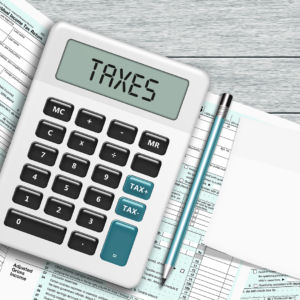Thirty years is a long time, especially considering how much can happen in that time span. For example, the phrase “iPhone” was just poor grammar and “tweeting” was exclusively for birds. Yet, with all the changes and advancements in the world and in the United States, taxpayers are saddled with a tax code that hasn’t been overhauled since 1986.
Comprehensive tax reform and bipartisanship is possible. On October 22, 1986, Congress and the White House came together in a rare display of bicameral, bipartisan cooperation to pass comprehensive tax reform. Republican President Ronald Reagan worked with a split Congress (Republican Senate and Democrat House) to accomplish the largest overhaul of the tax code in the United States. The anniversary of the Tax Reform Act of 1986 provides a perfect opportunity to make the case once again for a major overhaul of our tax system.
The tax code is, in a word, broken. Coming in at more than 2 million words, the tax code has been growing for more than 60 years when it was less than 500,000 words in 1955. The expansion of the tax code has led to greater complexity, and that in turn has led to more time and money spent by taxpayers on compliance.
The National Taxpayers Union published a study estimating that “the value of the time (6.1 billion hours) plus out-of-pocket costs expended annually on complying with the individual and corporate Tax Code amounts to an economic loss of $234.4 billion.” Those numbers are alarming and should provide Congress with all the incentive they need to get legislation on the floor and up for a vote in order to get something done.
Individual taxpayers are not the only ones feeling the pain of a broken tax code. Large and small businesses face the burden of a 40 percent corporate tax rate, the highest corporate tax rate in the developed world. The 40 percent rate is much higher than the global average of 23 percent and is chasing away jobs and investment from the United States, as corporate inversions increase as companies look to shift the burden of taxes to friendlier tax climates like Ireland or Canada.
The recent inversions should be a signal to Washington that tax reform is necessary. But, instead of pushing for a reduction in the corporate tax rate, the Obama administration is pursuing new regulations like the Department of Treasury’s 385 regulations that seek to punish the private sector.
The 385 rule, as proposed, would grant the IRS greater authority over businesses regarding how certain transactions are processed in terms of restructuring, such as inversions. Instead of finding a way to encourage companies to remain in the United States, this approach would put companies under more scrutiny from the government and would have a devastating long-term effect on the ability of the United States to keep and attract businesses in today’s global economy.
There is some good news for taxpayers as the 30-year anniversary approaches. First, House Ways and Means Chairman Kevin Brady, R-Texas, released a blueprint for tax reform titled “A Better Way for Tax Reform” earlier this year. Brady’s blueprint would simplify the code, reduce rates for individuals and businesses, scale back the Internal Revenue Service, and provide an economic boost by giving money back to taxpayers.
Another positive development is that House Speaker Paul Ryan, R-Wis., emphasized his desire to have tax reform as a top legislative priority for the next session of Congress that begins in January 2017. Ryan said last week that “I really want to get tax reform running as quickly as possible.” We do too.
Congress is only half of the equation to getting reform done. The president must also play a key role in passing tax reform. With an election looming, the presidential candidates also need to talk more about tax reform.
While Donald Trump has supported a plan for reform that falls mostly in line with the House blueprint on the individual and corporate side, Hillary Clinton has merely alluded to raising rates on the wealthy and not changing much of anything else. The candidates also differ on the inheritance tax, with Trump pledging to repeal it and Clinton promising to increase the rate.
Tax reform is an issue that voters care about, and the presidential contenders need to recognize that and address the issue more directly.
Thirty years ago gas was 89 cents a gallon and “The Oprah Winfrey Show” had its television debut. Now gas averages $2.26 a gallon and Oprah has her own TV channel.
The tax code represents the past, and the more complicated and bloated it remains the worse off taxpayers will be. Washington should use this weekend’s anniversary of tax reform as an inspiration to make reform happen again. After 30 long years, taxpayers deserve a code that works for them.

